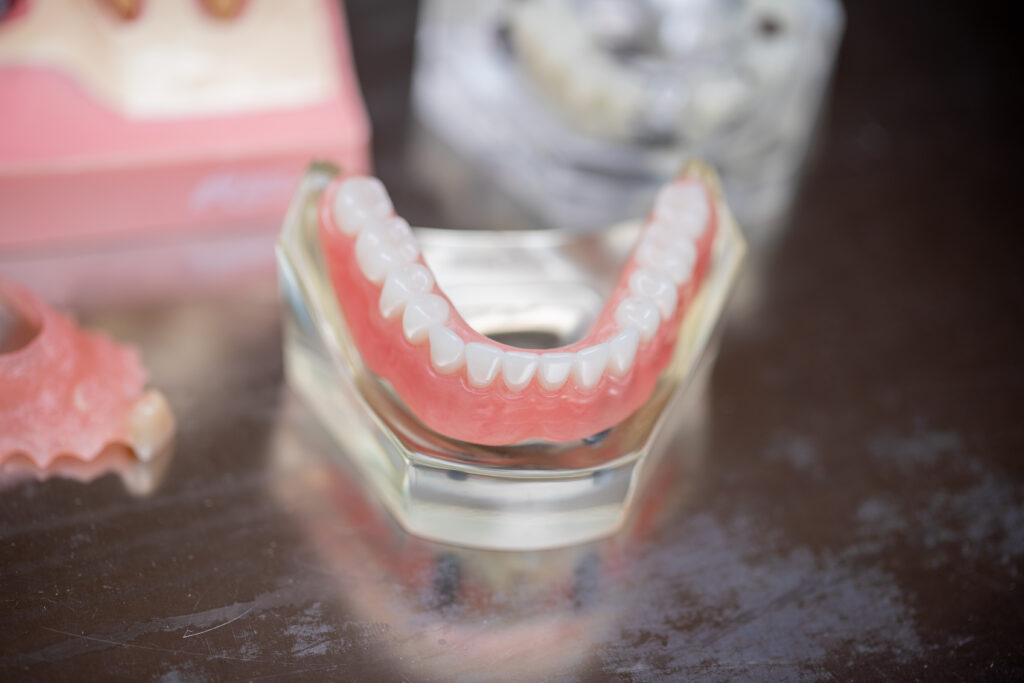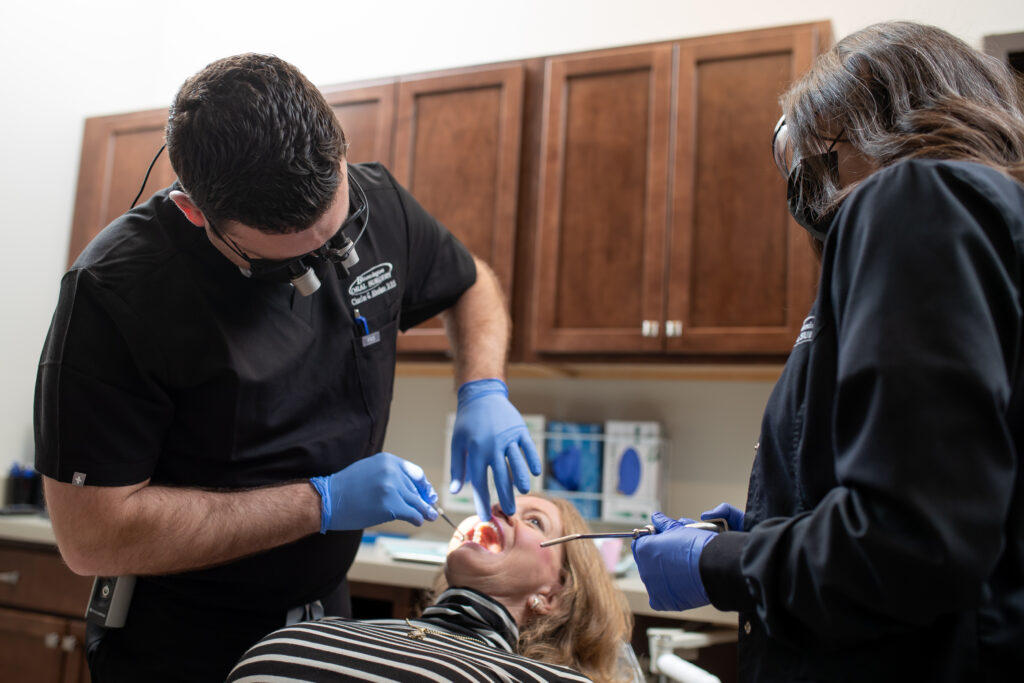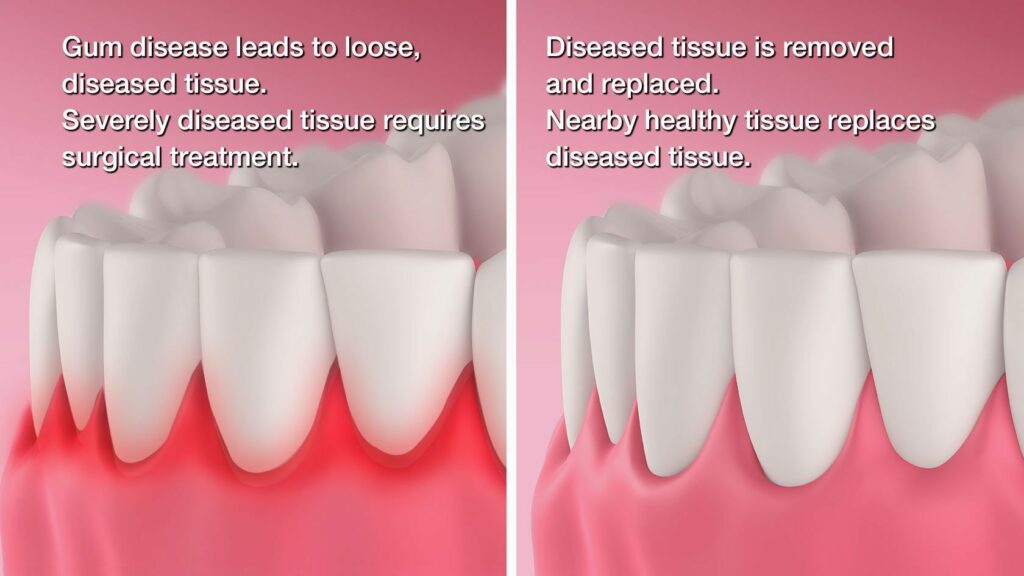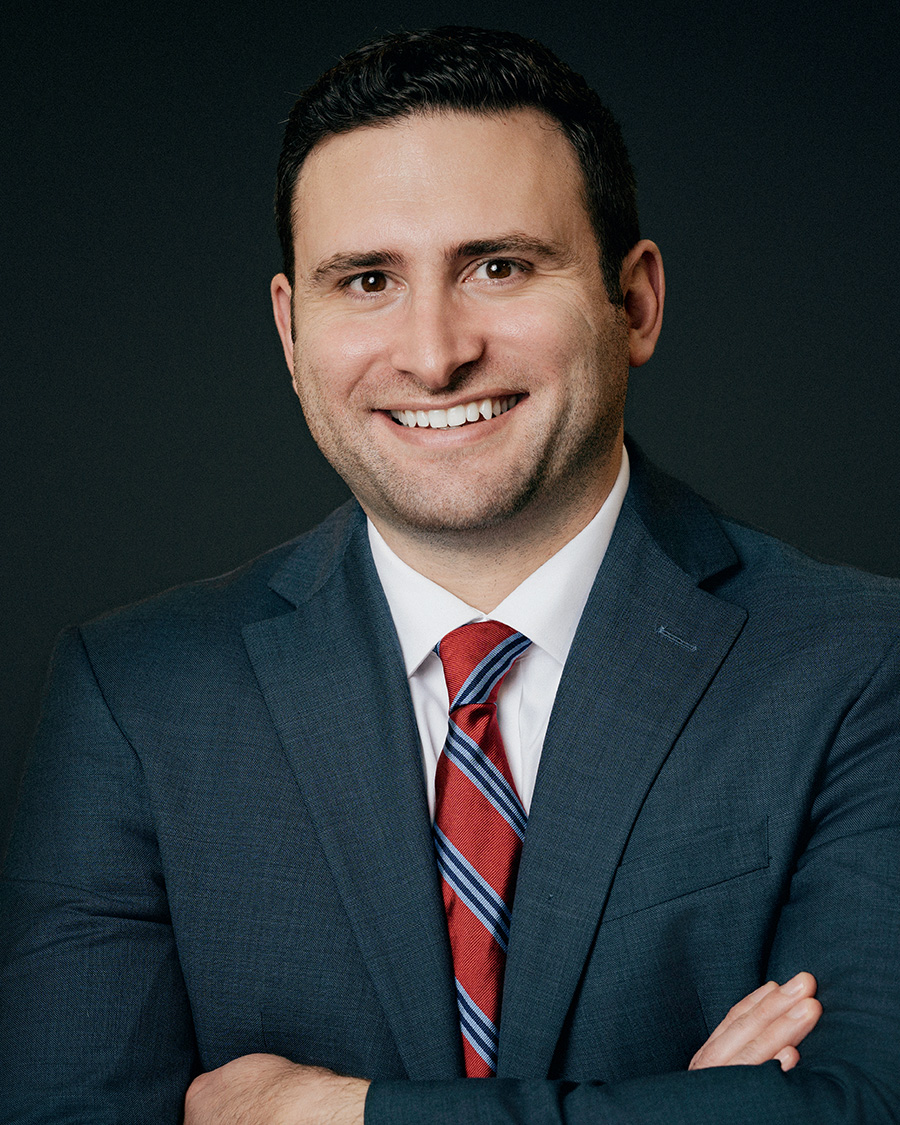Remove diseased gum tissue and restore oral health
Gingivectomy
Advanced gum disease causes loose tissue around the teeth. Eventually, nonsurgical treatments may not work, and the risk of tooth loss increases.
Gingivectomy, the removal of diseased gum tissue, can restore your oral health and protect your teeth.

Surgery can help when nonsurgical treatment cannot.
- When All Else Fails...
Gum disease can reach a stage at which antibiotics, scaling and root planing, and other solutions cannot resolve periodontal pockets (areas of loose tissue that allow bacteria to collect). Gingivectomy may be the only solution.
- A Clean Slate
Once the diseased tissue has been removed and your incisions have healed, you can begin a new chapter of oral health in your life that you can maintain with brushing, flossing, and six-month checkups.
- Improved Overall Health
Advanced gum disease places you at greater risk of heart disease, diabetes, and other conditions. Gingivectomy not only gives you a healthier smile but can also benefit your entire body.
Gum Disease Is Surprisingly Common Among Americans
The Centers for Disease Control report that nearly 50% of all Americans have periodontitis, according to a 2012 study.
Gingivectomy can improve both the health and appearance of your smile.
If your doctor recommends gingivectomy, it is likely the only option.
When non-surgical treatments fail to resolve diseased gum tissue, gingivectomy is usually the only viable way of restoring periodontal health. Fortunately, modern dentistry makes the procedure virtually painless. After the procedure, you can begin a new phase of oral health care tailored to preventing the recurrence of gum disease.
If you do not attend regular checkups, or if you have symptoms of gum disease, talk to your dentist today. Gingivectomy may not be necessary yet, and with prompt attention, you may never need it.

What to expect during treatment.
Your surgeon will apply a local anesthetic to the treatment area. Sedation is usually also available if you feel anxious or have difficulty sitting comfortably.
Using a laser or scalpel, the dentist will incise and remove diseased tissue.
The surgeon will reposition healthy gum tissue around the tooth and may use sutures to hold it in place.
The gums typically heal within a couple of weeks. In the meantime, you must make special modifications to your brushing and flossing routine to avoid disturbing the treatment area.
But what will it cost?
Gingivectomy can cost from $200 to $400 per tooth. If you have dental insurance, your plan will likely contribute to at least a portion of the treatment. Meanwhile, it can prevent the need for much more costly treatment, such as dental implants and dentures, which can cost thousands of dollars.

Get to know us.
At Bloomington Oral Surgery, we know how to help you. Our board-certified surgeons and expert staff can provide the care you need to relieve the discomfort you feel.


